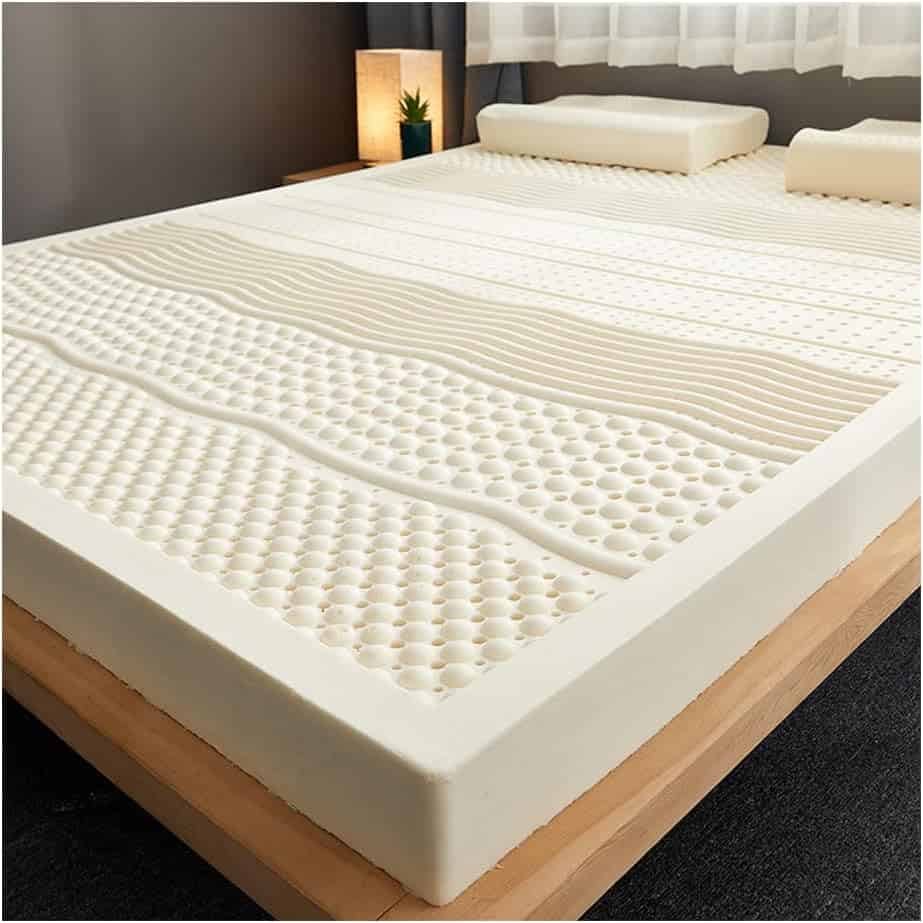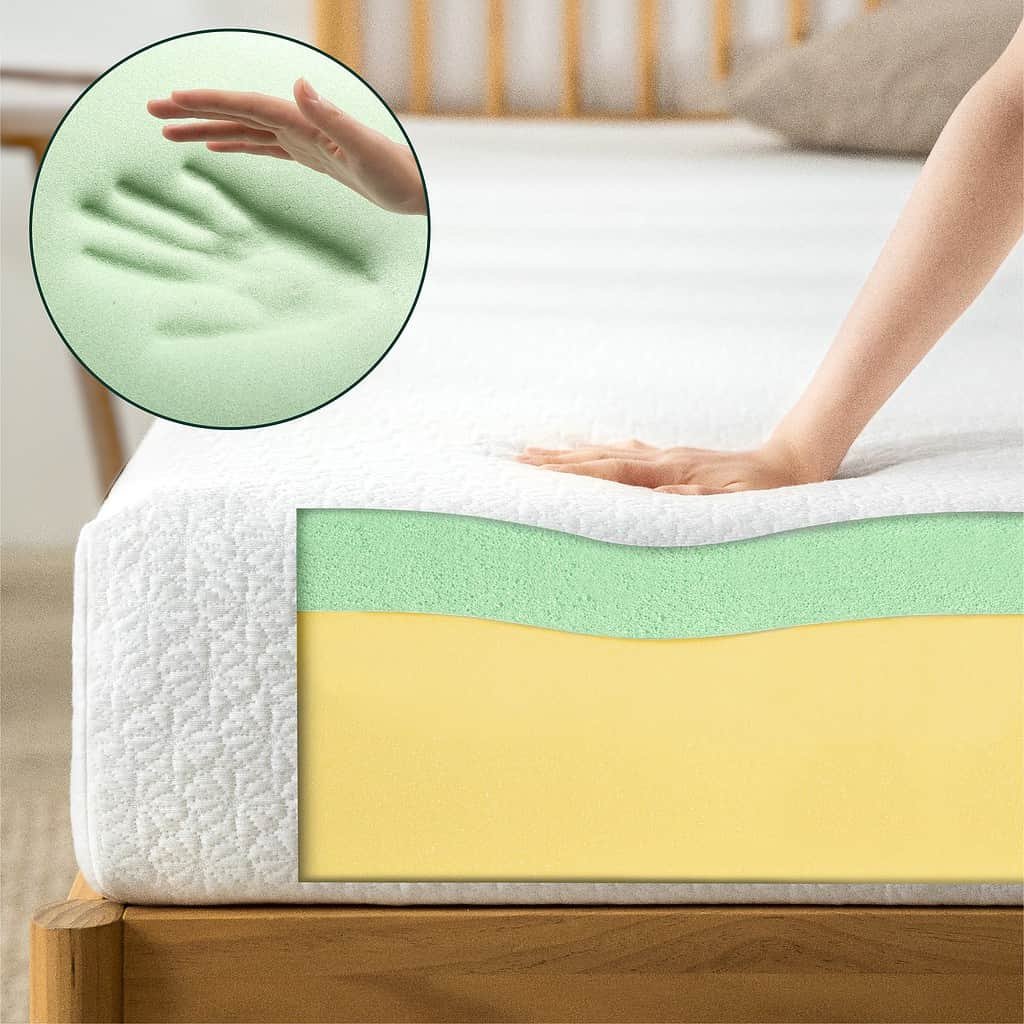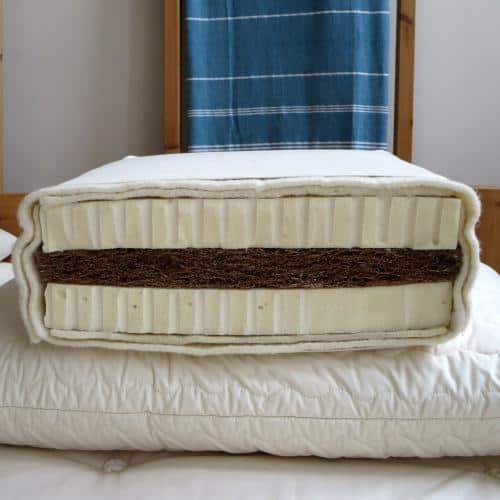Memory Foam vs Latex: Comprehensive Comparison for Better Sleep Choices
When it comes to mattress shopping, selecting the best one can be a daunting task. With countless options available in the market, two types consistently dominate the scene: memory foam and latex mattresses. Each type caters to different needs and preferences, and understanding their features is crucial in making an informed decision. In this article, we’ll delve into an in-depth comparison between memory foam and latex mattresses, highlighting their similarities, differences, and the various advantages and disadvantages each one possesses. Through this information, selecting the right mattress for your needs will become a much simpler process.
Key Takeaways
- Memory foam and latex mattresses differ in materials, comfort levels, and performance.
- Understanding the benefits and drawbacks of each type can help in making an informed decision.
- Consider factors like eco-friendliness, hypoallergenic properties, and warranty when selecting a mattress.

Memory Foam vs Latex Overview
Who Would Benefit from Memory Foam?
Memory foam is a unique material composed of polyurethane, originally designed by NASA to cushion pilots and astronauts from the pressure of G-forces. Nowadays, it is widely used in various products such as sofas, car seats, and mattresses. Memory foam mattresses are known for their slow-moving feel, which conforms to the body, creating a sensation of sinking into the mattress.
Individuals who prefer to sleep “in” their mattresses rather than “on” them might enjoy memory foam. This characteristic is especially beneficial for side sleepers, providing excellent pressure relief on their shoulders and hips. Memory foam mattresses are more affordable, making them an attractive option for those looking to spend less. People who sleep with a partner may appreciate memory foam’s motion isolation properties. This feature prevents motion transfer, allowing both individuals to sleep undisturbed by each other’s movements.
In contrast, latex mattresses are made from natural or synthetic latex, resulting in a bouncy and firmer feel. Latex foam does not allow sleepers to sink in as much as memory foam, offering a different experience.
To summarise, those who might prefer memory foam mattresses are:
- Individuals who want to sink in and sleep more “in” their mattress
- Side sleepers seeking pressure relief on shoulders and hips
- Budget-conscious shoppers
- People who sleep with partners and require motion isolation
- It’s essential to consider your personal preferences, sleeping position, and budget when choosing between memory foam and latex mattresses.
Benefits and Drawbacks of Memory Foam
Memory foam, a polyurethane foam, has several advantages that make it a popular choice for many sleepers. One of the key benefits of memory foam is its exceptional pressure relief. The foam contours to the shape of the sleeper’s body, allowing it to sink in and supporting pressure points such as the shoulders and hips. This feature benefits people experiencing pain, as the foam’s contouring can offer significant pain relief for conditions like fibromyalgia and arthritis.
- Another advantage of memory foam is its quietness. Unlike innerspring mattresses, which can be noisy and squeaky as they age, memory foam is a much quieter material. This characteristic makes it an ideal choice for couples, as it minimises the transfer of movement from one side of the bed to the other, ensuring undisturbed sleep for both partners.
- However, memory foam does have some drawbacks. A common complaint among users is its tendency to trap heat. Synthetic memory foam can cause some sleepers to feel hot and sweaty, as their body heat is reflected towards them while using traditional memory foam. Nowadays, many manufacturers incorporate cooling gel to counter this issue, making the foam more breathable and comfortable.
- Another concern with memory foam is the limited mobility it can offer. The slow response and minimal bounce of the foam can make sleepers feel “stuck” in the mattress, resulting in difficulty changing positions or getting out of bed. This can be particularly inconvenient for people with limited mobility or those who frequently change positions during the night.
- Additionally, memory foam mattresses can emit a strong chemical odour, known as off-gassing, when they are first unboxed. Although this smell typically dissipates after a few days, it can be overwhelming for some people initially.
The durability of memory foam can be a concern, depending on its density. Memory foam with a density of less than 2 lb is more prone to sagging, potentially causing unevenness and indentation after a few years of use. This can lead to an uncomfortable sleeping experience, prompting the need for a replacement sooner than expected. Memory foam offers a range of benefits, such as superior pressure relief, pain alleviation, and quietness, making it an attractive choice for many sleepers. However, it also has its downsides, including trapped heat, limited mobility, off-gassing, and the potential for sagging in low-density foams. It’s essential to consider these pros and cons when evaluating memory foam mattresses for personal needs and preferences.
Benefits and Drawbacks of Latex
Latex, a popular mattress material, offers numerous advantages and disadvantages. Its breathability and cooling properties make it an appealing choice for hot sleepers. Unlike memory foam, latex doesn’t retain heat, ensuring a cooler night’s sleep.
- Dunlop and Talalay latex materials are natural, free from harmful chemicals, and environmentally friendly. The manufacturing process for latex foam is chemical-free, contributing to a greener alternative. A significant benefit of latex is its bouncy nature, which makes it easy to move, reposition, and get in and out of bed. Most people enjoy the sensation of sleeping “on top” of a latex mattress rather than sinking into it.
- Latex is also renowned for its durability. Unlike some memory foam types that may sag or develop indentations, latex retains its shape and is a long-lasting material. However, the longevity and quality of latex mattresses come at a high initial cost, which may not be affordable for everyone. Despite its many advantages, latex does not offer the same pressure relief as memory foam. Side sleepers might experience discomfort and pressure on their shoulders and hips. To alleviate this issue, some latex mattresses incorporate wool tufting beneath the cover to provide extra softness and comfort.
- Another drawback of latex is its weight. The material is naturally heavy, making latex mattresses challenging to manoeuvre. While this is not a frequent concern, it can be a burden when moving or repositioning the mattress. Lastly, it is important to consider the potential for latex allergies. Although rare, individuals with extreme latex sensitivities may struggle with sleeping on a latex mattress.
- Latex mattresses provide cooling, eco-friendly, and durable options for sleepers. However, potential drawbacks such as high costs, less pressure relief, and allergies should be considered before committing to this type of mattress.

Frequently Asked Questions on Memory Foam and Latex Mattresses
Which is more suitable: memory foam or latex?
It’s not necessarily that one mattress type is superior to the other, but instead that they cater to different personal preferences. Memory foam mattresses are a better choice for side sleepers, those dealing with pain issues, and individuals looking to save money. On the other hand, heavier people, those with mobility concerns, and those seeking a longer-lasting mattress typically prefer latex.
Are latex mattresses firmer than memory foam?
Generally, latex is firmer than memory foam, providing less sinkage. High-density memory foam can be somewhat firm, but it’s unusual for it to be firmer than latex.
Should one choose latex or memory foam for alleviating back pain?
Both latex and memory foam can be effective for easing back pain, but the key factor is the mattress’s firmness. People with back pain typically seek a medium-firm mattress that offers a balanced level of comfort and support. This can be found in either latex or memory foam mattresses.
Which mattress sleeps cooler: memory foam or latex?
Latex mattresses generally sleep cooler than memory foam mattresses, as they avoid heat retention that can occur in memory foam. Consequently, latex mattresses contribute to a more comfortable and cooler sleep experience.
What distinguishes latex from memory foam?
Latex and memory foam are popular materials for mattresses, but they have some key differences. Latex is a natural material derived from the sap of the rubber tree, while memory foam is a synthetic material made from polyurethane. Latex mattresses often have a firmer feel and provide more bounce, while memory foam mattresses contour to the body for pressure relief and can have a softer feel to them. Memory foam retains heat, whereas latex sleeps cooler due to its open cell structure.
Which material provides superior pressure relief and support?
Memory foam provides excellent pressure relief and support by conforming to the body’s unique shape and distributing weight evenly. This can alleviate pressure points and maintain proper spine alignment during sleep. However, some people might find that latex also offers adequate pressure relief and support, as it has a firmer feel and a more responsive surface. Personal preference and sleep position can play a significant role in determining which material provides better support and comfort.
Do latex or memory foam mattresses sleep cooler?
Latex mattresses sleep cooler than memory foam mattresses, as latex has an open cell structure that allows for better airflow and heat dissipation. Memory foam, on the other hand, tends to retain heat due to its viscoelastic properties. Some memory foam mattresses may incorporate cooling technologies, such as gel infusions or open-cell foam, to help address this issue. Still, overall, latex is generally regarded as the cooler option.
Are there any allergies or health concerns with memory foam or latex?
Both memory foam and latex mattresses can cause potential allergies or health concerns in some individuals. Those with latex allergies should avoid latex mattresses, which can trigger allergic reactions. On the other hand, memory foam mattresses can sometimes emit an initial chemical odour, referred to as off-gassing. Although this odour usually dissipates within a few days and is not harmful, some individuals may be sensitive to the smell or experience irritation or respiratory issues. Choosing a mattress made from certified materials and allowing it to air out before use can help mitigate potential concerns.



